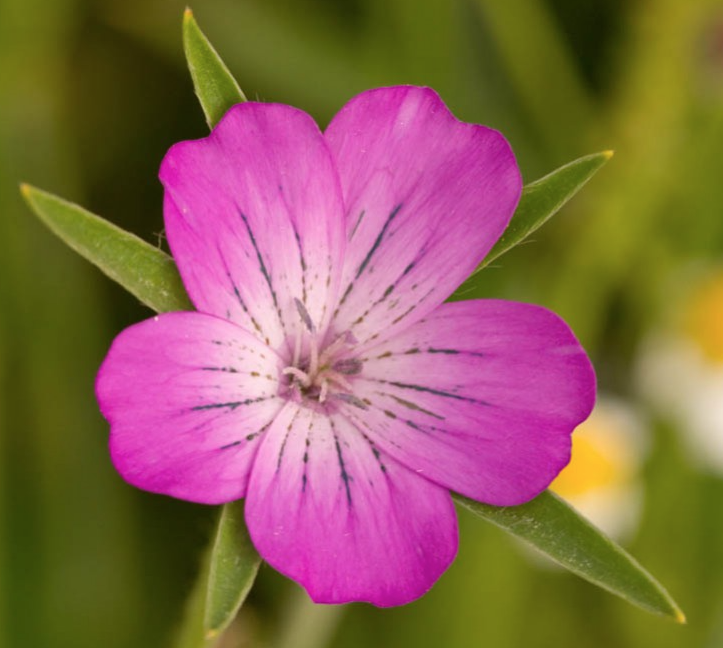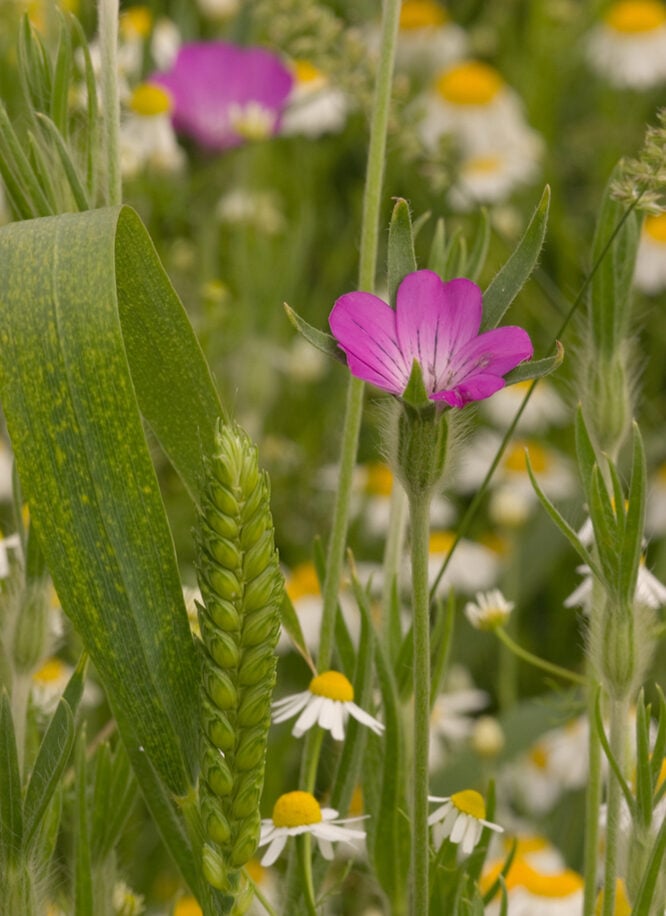Description
A medium to tall (up to 1m +) annual with long, narrow and softly hairy leaves. The large (up to 3.5cm across) pinky purple flowers are borne singly on a long stem and are surrounded by long pointed sepals. The flowers are followed by a straw coloured flask like seed head containing large (3.5mm) black, rough textured seed.
Habitat Information
Corncockle was introduced into Britain as a contaminant of grain at least as far back as the Iron Age. It is a plant that can tolerate a range of soil types and was a weed of cereal and other arable crops. In Britain its stronghold appeared to be within rye on the light, sandy soils of the south and east of the country. Although never common, it suffered a dramatic decline at the beginning of the twentieth century with the development of improved seed cleaning techniques. It is now virtually extinct in the wild.
Growing Information
Seed can be sown onto a bare earth site in the autumn or spring. As the seed is short lived once in the soil, it is probably best to avoid sowing in winter or early summer. Corncockle can be established on most soils but does particularly well on free draining sandy loams. Being an annual it requires open ground to re-establish itself, so an autumn cultivation is essential if you wish it to return. Corncockle is often used in association with other cornfield annuals, as with our EC1 and EC2 mixtures, to provide some first year colour and as a nurse crop when sowing a meadow mixture.
There was some rather hysterical press coverage about the perceived toxicity of this plant some years back. In common with many wild and garden plants it is theoretically possible to poison yourself if you have the will power to munch through a bulk of bitter and unpalatable vegetable matter, but for anyone who is worried may I suggest you visit The corncockle kerfuffle, or why Countryfile isn’t trying to kill you | Gardens | The Guardian for a more authoritative answer. One aspect of its toxicity that is worth considering is for anyone that has used a cornfield annual mix as a nurse crop to a meadow and intends to use grazing animals as a management tool. Corn cockle may persist for a couple of years after sowing so we suggest you don’t use animals until it has disappeared from the sward.



